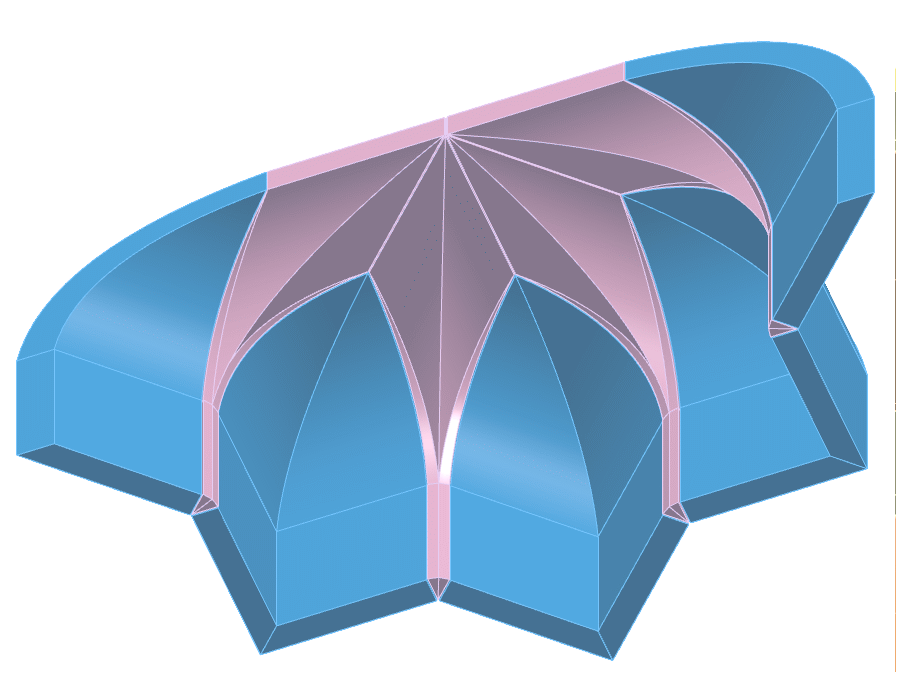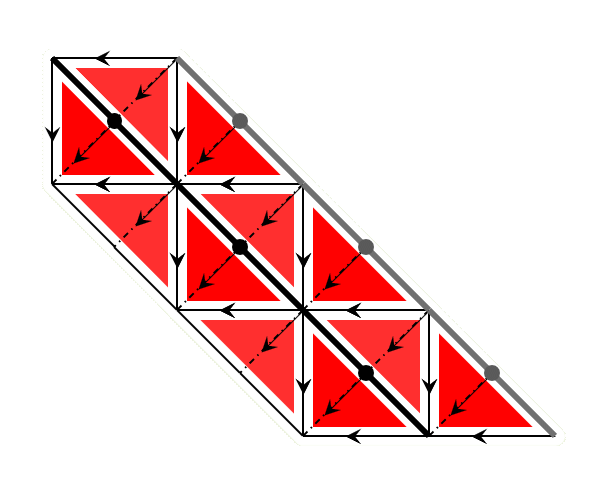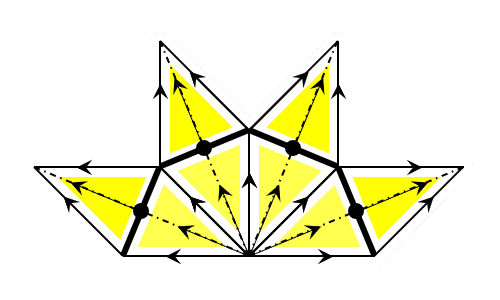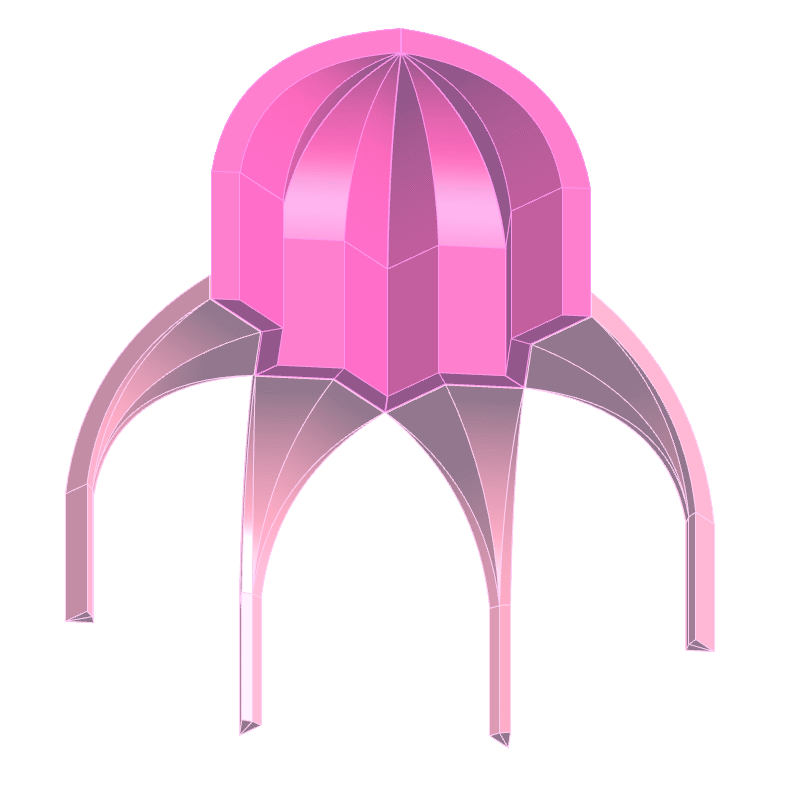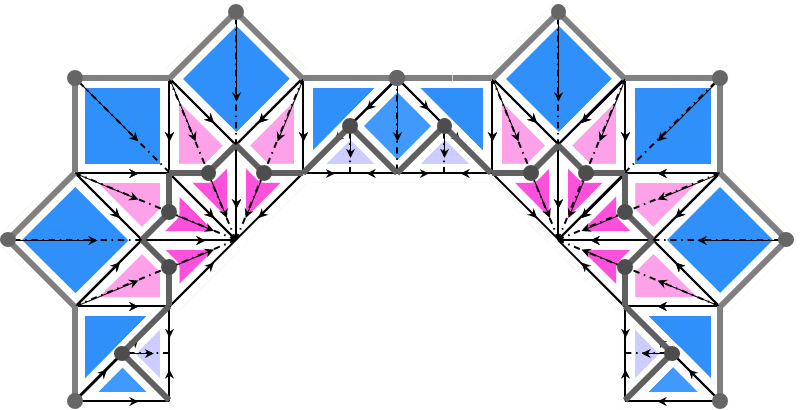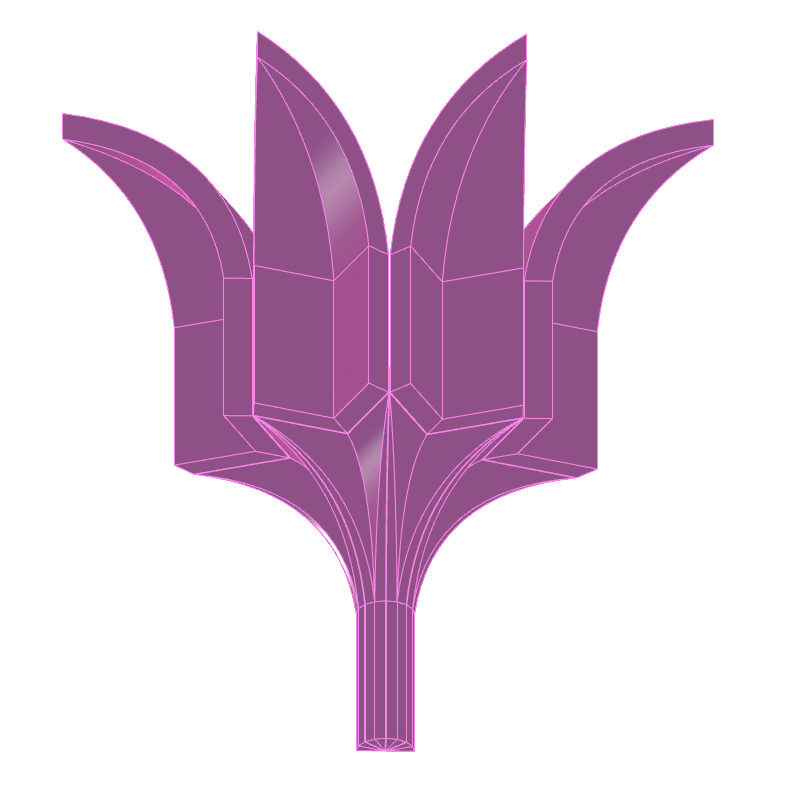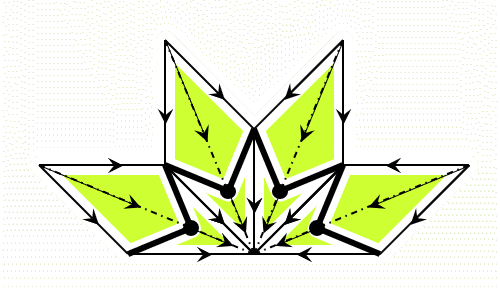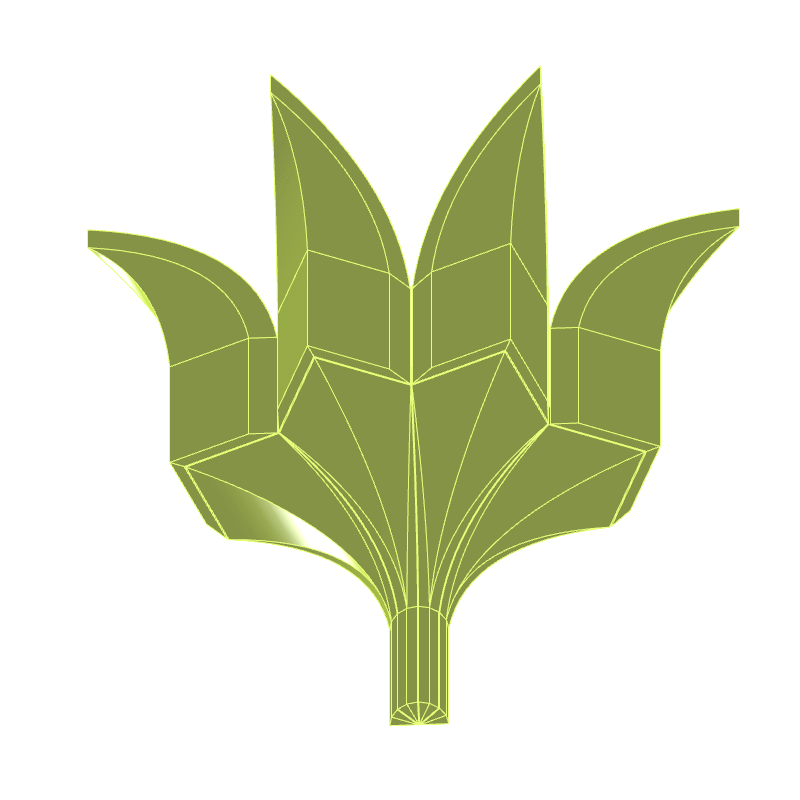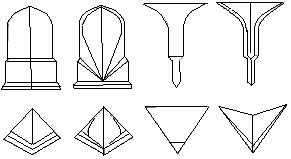My Units
My series of pre-defined units is as large as Sakkal his series, much longer than Harmsen assumed. Below you see an overview, next examples of each, then all possible permutations in the 45° grid, finally samples of muqarnas.
Examples of my units
This is an overview of examples of my pre-defined units.
My permutations
The number of permutations in the 45° grid is limited. In the octagonal grid there are 28 feasible configurations. Each unit is divided into two mirror-symmetrical triangles. Angles are multiples of 22,5° and 8 × 22.5° = 180°. Other configurations were rejected because they would be too large. The next question is whether these exceptional and additional units exist in real-world examples, and the answer is yes. Most of them can be found in Seljuk, Ottoman, and Armenian muqarnas.
My tables
So far, I produced almost thirty different muqarnas units.
Samples of Constructing a muqarnas
With 3D printed Lego-like building blocks, students can construct a muqarnas themselves.
Tak & Bos
Bos and Tak organised workshops for talented high school students. They gave them 3D-printed Lego-like bricks to assemble muqarnas.
Harb
In 1978 Ulrich Harb wrote his book Ilkhanidische Stalaktitengewölbe; Beiträge zu Entwurf und Bautechnik, Archäologische Mitteilungen aus Iran after his excavations in Iran of the palace Takht-i Sulayman.
Harmsen
The fifteenth century mathematician al-Kashi defines the muqarnas in his "Key of Arithmetic" from a practical point of view: The muqarnas is a roofed (musaqqaf) [vault] like a staircase (madraj) with facets (dil') and a flat roof (sath). Every facet intersects the adjacent one at either a right angle, or half a right angle, or their sum, or another combination of these two. The two facets can be thought of as standing on a plane parallel to the horizon. Above them is built either a flat surface not parallel to the horizon, or two surfaces, either flat or curved, that constitute their roof. Both facets together with their roof are called one cell (bayt). Adjacent cells, which have their bases on one and the same surface parallel to the horizon, are called one tier (tabaqa). The measure of the base of the largest facet is called the module (miqy¯as) of the muqarnas. In addition there are intermediate elements which connect the roofs of adjacent cells or other intermediate elements.
In al-Kashi's definition of muqarnas it is explained that a muqarnas is constructed from different cells. These cells are the main building blocks of which the muqarnas is built. Beside the cells, some space need to be filled with another kind of building blocks, the so-called intermediate elements.
- al-Kashi
- Dissertatation: Algorithmic Computer Reconstructions of Stalactite Vaults - Muqarnas - in Islamic Architecture
Sakkal
These drawings are retrieved from his 1982 thesis Geometry of Muqarnas in Islamic Architecture.
- Overview of muqarnas plans by Sakkal
Sakkal's floor plans gave me the opportunity to examine Armenian muqarnas.

- Thesis Mamoun Sakkal
- Instagram: RemarkableBooks Sakkal
Mamoun Sakkal introduces muqarnas blocks flowing over two tiers. This concept is more fruitful than the approach of rigidly cutting layers. His thesis is a must-read.
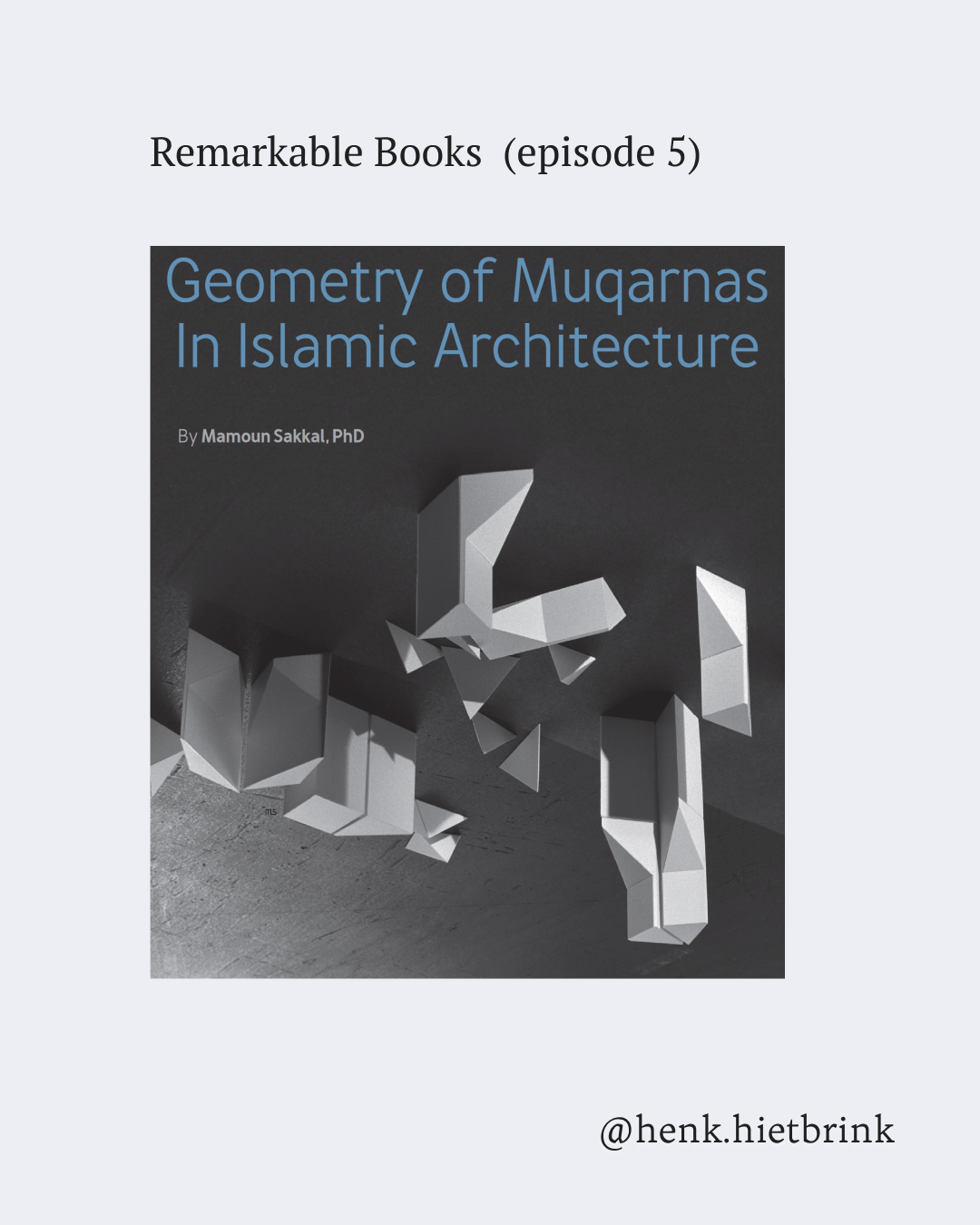
Tuncer
Drawings are from his book on Diyarbakır: © Tuncer
- Overview of muqarnas plans by Tuncer
Tuncer's floor plans gave me the opportunity to examine the Diyarbakır muqarnas.

- Books Orhan Cezmi Tuncer
- Instagram: RemarkableBooks Tuncer
Tuncer's book gave me the opportunity to examine a series of related muqarnas, looking for comparisons and differences.

Senalp
Drawings are from his thesis: © Senalp
- Thesis Hüdai Sirri Senalp
- Instagram: RemarkableBooks Thesis Senalp
Written in English, this thesis is a key to Ödekan's work for me.

Ödekan
This drawing is from her 1977 thesis: © Ödekan
- Thesis Ayla Ödekan
- Instagram: RemarkableBooks Ödekan
It was hard to find, but I am glad that I got a copy of Ayla Ödekan her book on pre-Ottoman muqarnas. I keep searching for her other book on Early Ottoman muqarnas.







